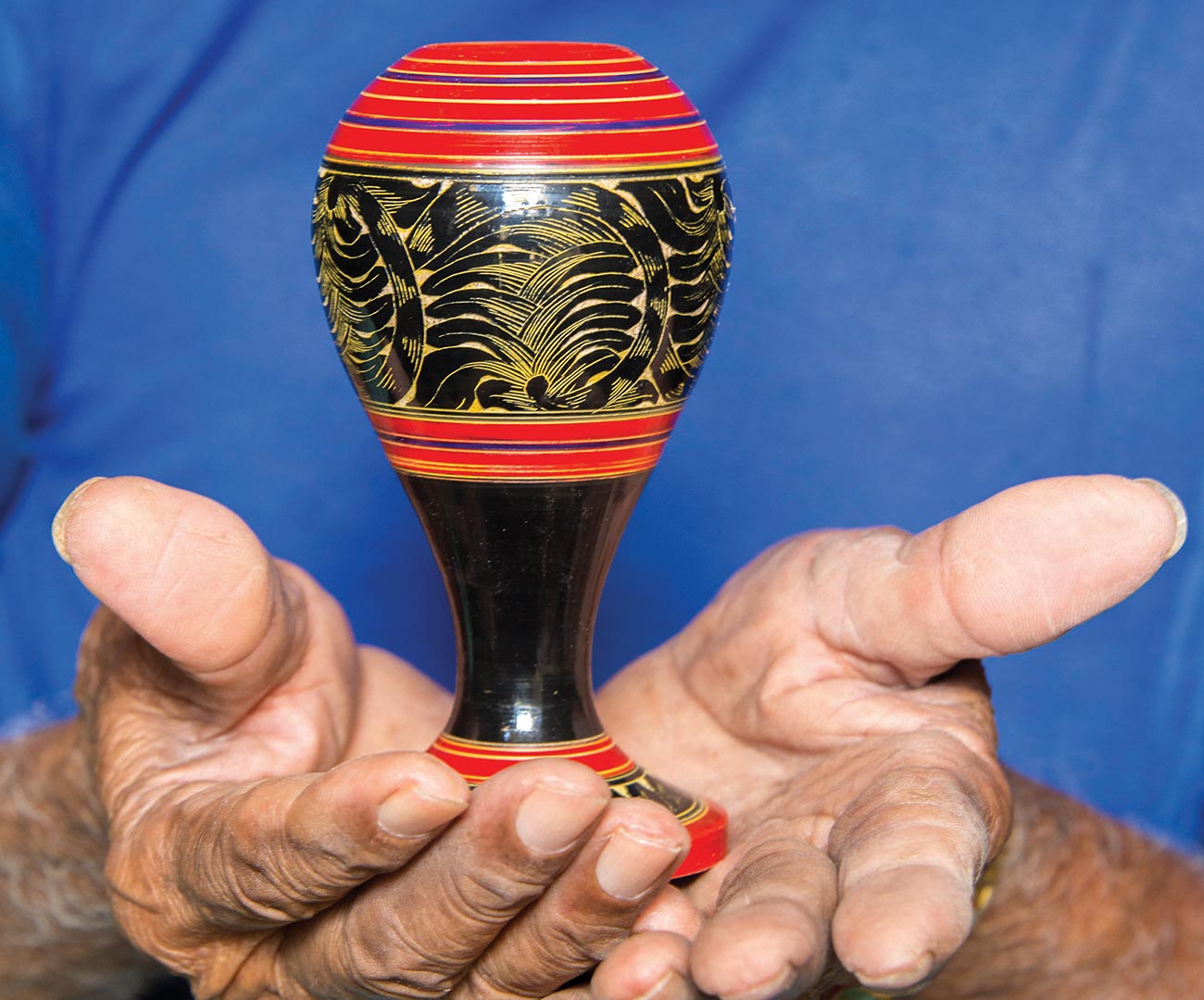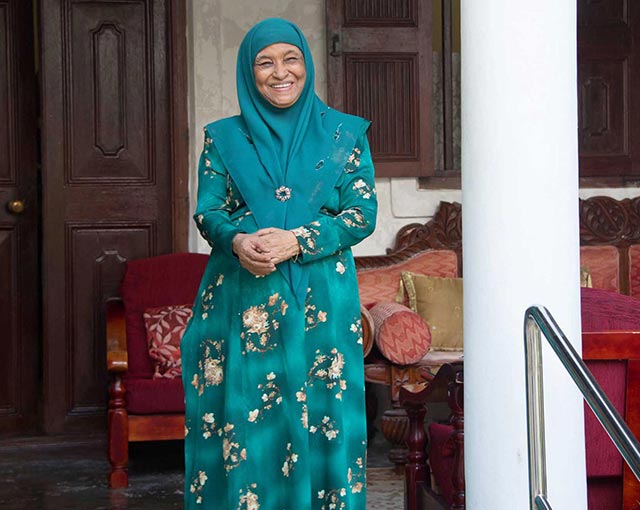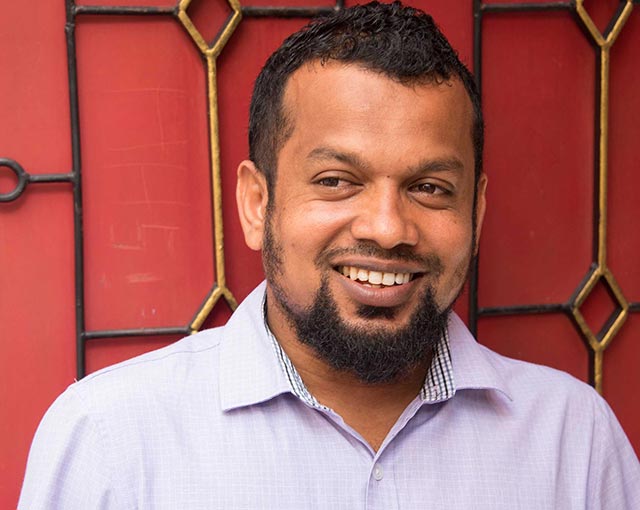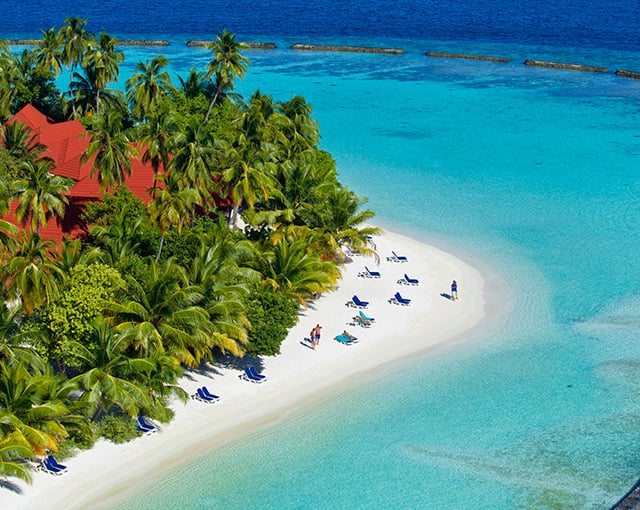Meet the talented artisans keeping the Maldives’ history of craftsmanship alive.
The desire to carry home a souvenir from a distant land is as old as the urge to travel itself. In the past, globetrotters could be reasonably confident that the memento they bought in New York, Paris or Moscow actually came from the place they were visiting, but today the trade in souvenirs has become a multinational melting pot, with miniature Eiffel Towers frequently made in China and Russian babushka dolls crafted in India.
Surprisingly, even in the Maldives it is not easy to acquire authentic Maldivian artefacts. It is estimated that over 80% of the souvenirs sold in Malé and at resort boutiques are imported, mostly from Bali in Indonesia. How can this be, given the Maldives’ rich and unique tradition of arts and crafts, which are integral parts of its national culture? The answer lies with the mechanisation of fishing boats in the 1980s and the advent of the tourism industry, both of which opened up alternative job opportunities for many Maldivians. Ever since then, the number of people who practice traditional crafts such as weaving and woodcarving has been in decline.
The hundred or so resorts in the Maldives would seem to be natural places for local handicraft producers to sell their creations, but the lack of an efficient transport and marketing network has proven an obstacle to realising this potential. Added to this, the unrestricted flood of cheap imported souvenirs makes it difficult for locals to sell their work at fair prices that reflect the time spent making their arts and crafts in traditional ways.
Fortunately, scattered among the far-flung islands of the archipelago, there are still a few individuals and communities who have kept the ancient arts alive. For example, the island of Thulhaadhoo in the northern Raa atoll has remained a production centre for intricate liyelaajehun lacquerware work, and in the southern Huvadhoo atoll, the women of Gadhdhoo island are famous for the finely woven, patterned kunaa mats, which they make from pandanus leaves.
Maldivian artisans are increasingly using social media and online channels to sell their work, and partnerships between island communities and nearby resorts that showcase traditional cultural activities have the potential to provide a sustainable source of revenue. These opportunities offer glimmers of hope that the Maldives’ national heritage of arts, crafts and music will continue to survive and may even prosper well into the future.
Lacquerware
Perhaps the most iconic Maldivian artwork is the intricately painted lacquerware known as liyelaajehun that are often presented as official gifts to visiting dignitaries. Once this craft was widespread throughout the Maldives but now it only flourishes in Raa atoll in the north of the country. Two artisans visit Kurumba every week to demonstrate how to make these decorative and brightly coloured jewellery boxes and vases.
Lacquerware master Abdul Rahman Abu Bakr lives in an old coral stone house in a narrow street on the picturesque island of Thulhaadhoo in Raa atoll. He uses the front room of his house as a workshop, and it is filled with the tools of his trade and pieces of wood that he will eventually transform into beautiful artworks. Now 83, he is the oldest person on the island where there are three families dedicated to making liyelaajehun. He has travelled to seven countries with Maldivian national delegations to showcase his art at trade fairs and exhibition.
Abdul Rahman has seen many changes on the island since as a young boy he went fishing in traditional sailing boats, known as dhonis, long before the introduction of motorised vessels. “When I was young, there was no electricity and no schools on the island. I’m happy that all of my 11 children received educations, and they are now all working in Malé. I’m not sure how many grandchildren I have now, but I think there are more than 20,” he says with a shy smile.
In his family, there is a long tradition of making lacquerware; Abdul Rahman himself learned the art from his father, who was also considered a master craftsman. “In the beginning, my father told me just to observe him working, and it was only after two years that I was allowed to try myself. I learned the patterns that have been passed down through the generations by helping my father finish the objects he made, just as he did for his father."
The master craftsman describes the process of making liyelaajehun as complex and time consuming. “Selecting good wood is important. The best is from a local tree called unee, which is easy to carve but strong. Now, we use an electric motor to drive the lathe. But before, it was the job of the assistant to turn the wheel for the master.
“First, the wood is sculpted to the desired shape, and then it is coated with layer upon layer of lacquer, using different colours – mostly black, red and yellow, and sometimes green. For special pieces, I sometimes add a little gold or silver dust before polishing with dry coconut leaves. The final step is to etch a design by hand, which is always different depending on my mood. If I concentrate, each piece takes two or three hours to make properly.” When he has enough stock, Abdul Rahman makes a trip to Malé to sell his work and visit his children. “None of my children make liyelaajehun, but I have taught a number of apprentices over the years. I still enjoy doing this work, as it keeps me fit and mentally active. It gives me satisfaction when people appreciate the beauty of the things I make, and I hope to continue doing this as long as God gives me strength.”
Model Boat Building
By any standard, the construction of the traditional dhoni sailing boats should also be considered an art form. Custom dictates that the best boats are built by a team of craftsmen working in unison. The leader of the team does not rely on drawings and plans, instead using only his memory and instinct to create a masterpiece of boat design that is perfectly suited for the oftentreacherous conditions sailing over reefs and in the open ocean
The joy of boat building remains even when fate has decreed that it is no longer possible to make a full-size vessel. Such is the case of Mohamed Mahir, a talented boat builder whose career was cut short by a tragic accident in the shipyard that left him unable to walk. Undeterred by his handicap, since he was 10 years old he has poured his energy and skill into making model replicas of his beloved dhonis as display items for resorts and for private clients and collectors.
His open-air studio is in the small yard of his house, not far from the lacquerware workshop of Abdul Rahman. With a big grin on his handsome face, 53-year-old Mohamed Mahir is proud to show off his latest work, which is nearing completion. It is a model of the dive boat of a nearby resort, and it has taken him almost three months to create the five-foot long model with all its attention to detail, including a rack of oxygen cylinders lined up in the cabin.
“I collect the wood from cargo pallets and make each part for the model just as I would for a full-size boat. I don’t use any plans, because I know from experience just how each piece should be made. Now, I get almost as much pleasure making these models as from a real dhoni. If I were to put them in the water, I’m sure they would float perfectly too,” he says with obvious pride.
Mohamed Mahir and his wife have five daughters and one son, and three of their children now live and work in Malé. Most of his work is done on commission, but his daughters help him sell other boats he makes through eBay and on their Facebook pages. “The bigger boats I can sell for US$1000 dollars or more, depending on the level of detail. But my customers think this is a fair price, because they know how much work goes into making them.
Stone Carving
Remarkable as it may seem, while many traditional crafts are in decline, one ancient skill is having a surprising revival at the hands of a group of talented young Maldivian artists.
A visit to the Hukuru Miskiy, or Friday Mosque, is a must on any excursion to Malé. This small but exquisite temple was built in 1658 during the reign of Sultan Ibrahim Iskandhar I to replace an even older building. Considered to be the finest example of coral architecture in the world, the Friday Mosque was shortlisted in 2008 by UNESCO as a tentative World Heritage Site.Built of interlocking coral stone blocks that resemble the finest marble, the walls of the mosque and the mausoleums of Maldivian Sultans in the surrounding cemetery are decorated with intricate patterns and designs that are a unique blend of cultural influences from Africa, India and Arabia. The last carvings were made over 200 years ago, and since then this indigenous art form has been lost to the Maldives and the world. Until now.
The man behind the revival of this ancient skill is self-taught sculptor Mohamed Imran. A wiry 30 year old with an artistic goatee beard, Imran studied art as an extra subject at school, but his first job was in the aviation industry. Unfulfilled by the work, he was on the lookout to do something different when a chance encounter gave him the opportunity
“Some surfer friends and I wanted to make a small park near the surf break in Malé as a place we could hang out,” he recounts. “We asked if we could take some earth from a new building site in town to use as topsoil for the garden. In the earth, we discovered some big coral blocks that were used as foundations for the old building, and we took them as well to decorate the park. We had an idea to carve the coral blocks to make them look nicer, but as there was no one doing this anymore, we had to teach ourselves. It was very difficult, and in the end I was the only one who persisted. I used to go to the Friday Mosque and study the carvings and try and work out how they were done.
The talent and creativity of Maldivian artists is a national resource that should be nurtured and encouraged, for it is through their art that the soul of the people is best expressed. Visitors to the Maldives can help this unique culture survive and prosper by seeking out original arts and crafts produced by Maldivians themselves to take home as beautiful and authentic reminders of this idyllic island nation and the artistry of its people.









